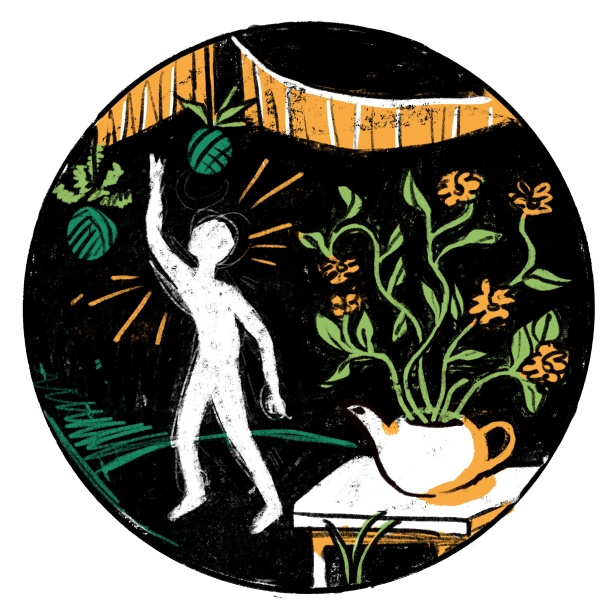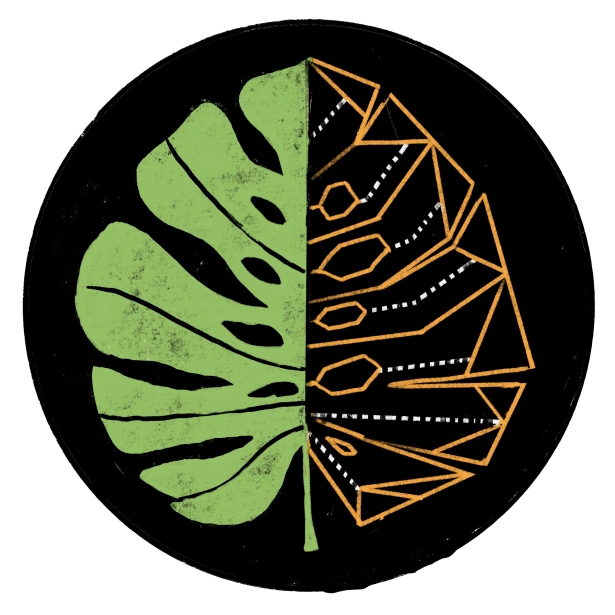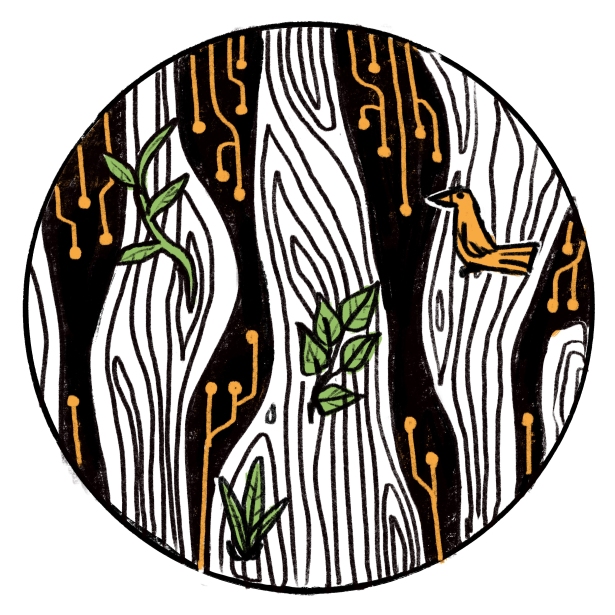Milo Juráni is a theatre critic from Slovakia who writes about the intersection of theatre and contemporary issues. Recently, Milo interviewed me for his Theatre in the Anthropocene series on his theatre webzine www.MLOKi.sk. The interview was first published in Slovak language. Much of my responses to his questions can be found in my recently published book: Ecoscenography: an introduction to ecological design for performance (2021). These are questions that I am often asked, so I hope that the answers might also be helpful to a wider audience.
Can you explain what Ecoscenography is?
My premise in bringing an ecological approach to scenography — what I propose as ‘Ecoscenography’ — is to shift performance design to an increased awareness of broader ecologies and global issues: to conceptualise ways in which an ecological ethic can be incorporated into theatre practices. Ecoscenography builds on contemporary re-considerations of performance design, where creative and environmentally conscious processes align to become a fundamental part of the scenographer’s ideas, practices and aesthetics. Being ‘ecological’ means integrating an awareness that no decision stands on its own: every design choice is intertwined with social, environmental, economic and political consequences that are far reaching and capable of having long-term effects, and, ultimately, benefits. This includes starting to adopt an expanded view of aesthetics that acknowledges the ‘unseen’ effects of making spaces — that which may not be immediately evident in the making of the work but has causational potential to form a trans-corporeal by-product of the ‘visible’ and ‘experienced’ (adding to landfill waste, air pollution and supporting child labour). This multifaceted and complex approach to aesthetics is already shifting how many scenographers engage mentally, as well as practically, with the issue.
Ecoscenography builds on contemporary notions of theatre and performance design to consider what an ecological approach to scenography does — how it affects our ways of thinking and doing within and beyond the performing arts. A central aim of my work has been to demonstrate that embracing sustainability in performance design opens up new modes of relating and collaborating: to work co-creatively with communities, environments, materials and places; to appreciate and advocate for ‘more-than-human doing’; to engage in ‘acts of care’ that foster a respectful and reciprocal communion with the world. This ‘permeability of relating’ in Ecoscenography seeks to dissolve perceived boundaries between artists, materials, audiences and the broader ecosystem, opening up greater eco-creative responsibilities and considerations for how we conduct our practice and communicate through it.
How did you start exploring a more ecological approach to stage design? Why should other stage designers join you?
I have been passionate about environmental and social issues for as long as I can remember. I grew up with a strong desire to incorporate ecological considerations into my day-to-day life; buying food from local markets, taking public transport, avoiding single use plastics, turning off lights, recycling and composting. However, when I walked into the theatre, all these considerations seemed to fall away. Somehow theatre gave me a licence to do the things I would never do at home. Looking back, it is difficult to pinpoint a single moment that ignited my passion for rethinking traditional performance design practices. It was a combination of many things: seeing my set thrown in a skip one too many times; feeling physically ill from the toxic fumes inhaled while expending several cans of spray paint on a single prop; being confronted by Al Gore’s The Inconvenient Truth and its uncompromising depiction of the threat climate change represents to current and future generations. No doubt each of these events has played a role.
My motivation with Ecoscenography is to encourage a sustainability ethos to both established theatre-makers wanting to engage with the topic, and the next generation who — my own experience tells me — are yearning to contribute to their rapidly changing world. I believe that the current ecological crisis presents us with an opportunity to not only collectively face the reality that our practices have consequences, but also with the potential to remake our profession. This ‘ecological turning’ will certainly be a pivotal point in the history of the performing arts, to be defined by the theatre-makers of today, but particularly by those of tomorrow. The urgency for this re-imagining has never been greater. Climate change, mass species loss, drought, forest felling and acidifying oceans pose immense threats to our environment, our society and to our culture. The aim of Ecoscenography is to catalyse ecological practices in performance design, providing a foundation from which new practices, new aesthetics and novel thinking can emerge.
Why you think theatre has been so slow to embrace sustainability?
It is difficult to say why the performing arts has been less progressive on the environmental agenda. Perhaps there have been too many negative preconceptions of what a sustainable approach means for our field. The assumption that ecological design is ‘expensive’, ‘boring’, ‘time-consuming’ and ‘incompatible with high quality aesthetics’ has definitely played a role. Other contributing factors may include: the fact that the theatre industry has been far too preoccupied with its own economic struggles; or the belief that theatre should have a ‘free-pass’ when it comes to ecological concerns because the impact of the performing arts is negligible compared with many other industries. Fortunately, these assumptions are slowly changing and the sustainability movement in the performing arts is finally taking off. I firmly believe that the 21st century will be one in which environmental concerns are at the forefront of our performance stories and designs.
What are your ideas on sustainable materials and making better material choices?
The aim of my book Ecoscenography: an introduction to ecological design for performance (2021) is to provide a philosophy or framework for working in a sustainable way that is less focused on a ‘how-to-guide’ for materials and techniques (of which there are already many resources). A key strategy of Ecoscenography is relational thinking. For example, taking a place-based approach to designing and that ultimately begins with how we respond to where we are, here, now, as a primary approach. One material choice in one place is not necessarily the best choice in another. Everything is relational. The challenge for the theatre maker is to seek out the possibilities of place rather than holding onto a preconceived idea that does not acknowledge the potential of its unique surroundings – the local skip, the charity shop or market next to the theatre, and the technicalities and materials of the theatre itself. In my book I outline the ‘three stages of Ecoscenography’ — co-creation (pre-production), celebration (production) and circulation (post-production) — which provides a fundamental framework for how this relational approach can be integrated into all areas of theatre production.
Does working with waste go hand in hand with Ecoscenographic practice?
Waste materials are a wonderful resource for the Ecoscenographer primarily because they are so abundant, easily accessible and cost-effective. The ‘scenographer as gleaner’ is a key strategy for pursuing place-based sustainability responses. Ecoscenographers forage across streetscapes and abandoned festival sites, and scavenge tip shops, recycle centres and charity shops. Here, extending the use of materials is not necessarily approached out of austerity but fuelled by a desire for invention and ingenuity — a way of rethinking design in response to ecological values.
In my long career as a stage designer, I have constructed numerous scenographic creations out of the societal remains, including transforming fragments of old tennis netting into animal costumes for children and reconfiguring industrial pallets into a make-shift home for characters trapped in a war-torn world. In my book, I also showcase a number of designers who have used reclaimed materials in wonderful imaginative ways to create sets and costumes for stage productions, from single use plastic waste and Styrofoam to old festival tents and fishing ropes. It is clear that the economic poverty or stigma of material debris has in no way hindered the rich and varied performance spaces that have been created by these designers. With ample imagination and openness, every found object provides an opportunity for reinvention. Instead, designers are challenged to look at things anew – to seek out the potential in these discarded remnants and transform them into something remarkable.
As good as it sounds, stage designers may still be sceptical of pursuing a sustainable approach. Some may see it as an obstacle that limits creativity, imagination, and artistic possibilities. What do you think about these concerns?
While Ecoscenography may seem like a daunting concept to some, I believe that this is also where innovation and possibility lies. Adopting an ecological approach allows theatre makers to imagine ideas well beyond the performance – to consider their responsibilities and contributions to the broader world. Essentially, Ecoscenography works from the premise that there is nothing more fulfilling than connecting to the living world in a way that is fundamental, positive and inspiring. My book showcases examples of how Ecoscenography might look like if we approach sustainability from a place of abundance, rather than one of scarcity and limitations. It demonstrates opportunities for integrating creativity, aesthetics and innovation with sustainable practice in a diversity of contexts. Using examples of my own work and others, I explore how Ecoscenography can be a mode of more-than-human engagement that can create ripples into wider systems, where performance design can act as a force for regeneration.
Taking a brief look at the programming of well-known theatre houses reveals that problems of Climate Change are increasingly emerging on stages – dystopian or utopian stories, performances that focus on non-human elements, political theatre, or activism on the stage. On the other hand, most of these productions are executed in traditional ways and do not often consider sustainability as part of the realisation. How do you feel about this approach?
I think it is especially important for productions that have an ecological theme or highlight the effects of climate change to also consider their impact behind the stage. Even better, if the productions highlight sustainable innovation. A great example of this is Atmen(2013), a German version of Duncan Macmillan’s climate change play Lungs at Berlin’s Schaubühne, directed by Katie Mitchell and designed Chloe Lamford. The team worked with Electric Pedals to stage the entire performance using human-generated power which was visibly controlled by the actors on stage. The show was focused on two protagonists who pedalled their way through topics such as overpopulation, climate change and species extinction while four supporting cyclists helped power lights, sound and projection from the sidelines. Part of the novelty of Atmen was the way in which sustainability was made uncompromisingly transparent as part of the experience, one where Ecoscenography becomes a highly visible dramaturgical approach to production.
The stage designers who participate in smaller production or independent projects can often choose how to work. On the other hand, many large theatre institutions have stringent rules, schedules and procedures. Stage designers working with hierarchical institutional parameters often don’t have a chance to do extensive experiments. Is it possible to embed Ecoscenographic principles into the larger theatre houses? If so, how?
Yes, absolutely. A notable example of a designer working in high profile traditional theatre settings is Tony award-winning Broadway set designer and sustainability advocate Donyale Werle, who works almost exclusively with salvaged materials, and describes her process as literally rummaging through local garbage sites to find treasures and ideas for her designs that fuel her creative process. Werle’s large scale set design for Peter and the Starcatcher (2012) was almost entirely made from recycled, borrowed, donated, or salvaged materials, including costume fabrics from past productions and discarded household materials sourced from local junkyards, charity shops and recycled art-material suppliers.
Another great example of sustainable production in larger theatres is EDEOS, an eco-design tool developed by the Lyon Opera that implements a circular framework in its design and construction processes. As a holistic sustainability calculator, the tool aims to assess the production of stage sets through its impact on climate, human health, ecosystems and non-renewable resources. What makes EDEOS unique is its focus on decision-making throughout the entire lifecycle of a set design, including the concept and post-production phase. While the project is currently designed for the Lyon Opera with its own specific conditions and supplies, it is hoped that EDEOS could become a shared industry tool that might also extend beyond the theatre to other related industries in the future.
Naomi Klein, and other authors dealing with the Climate crisis, emphasizes the importance of community engagement. Besides traditional stage design, you are also working in the field of expanded scenography. To rebuild public spaces into productive places for meeting and time-sharing is key to your Living Stage series. How does scenography, sustainability, community engagement and performance come together in your works?
The Living Stage is an ongoing global initiative that combines stage design, horticulture and community engagement to create recyclable, biodegradable, edible and biodiverse performance spaces. Part theatre, part garden and part food growing demonstration, The Living Stage uses the cycles of Ecoscenography to engage people in developing a greater understanding and appreciation of the living world. The co-created community grown spaces become the setting for performing and celebrating ecological stories, before being circulated back into the communities that helped grow them: physical structures become garden beds and community spaces; plants become food; and waste becomes compost. A central focus of The Living Stage is to bring a regenerative focus to Ecoscenography that creates opportunities for thrive-ability across more-than-human systems.
Since making its debut in Castlemaine, Australia, the concept has travelled to Cardiff (Wales), Glasgow (Scotland), New York (USA), as well as Armidale, Lorne and Melbourne in Australia. Each Living Stage evolves out of a direct response to the localities of site, ecology and community. No project is ever the same, yet they share clear commonalities: the celebration of multisensory elements, effective and multi-level engagement with audiences, and a legacy that stretches on long after the final performance. At the crux of the project is the notion of community-engaged and place-based design processes to foster equity and togetherness on global-to-local issues. With each iteration, The Living Stage concept has progressively become more engaged in the desire to enhance the connectivity and integration of more-than-human places in response to climate change, social inequity, food scarcity and biodiversity loss. It is a direct response to ‘what can theatre and performance design do?’ in the face of increasing environmental concerns. Integrating cyclic thinking into the design process has been essential to the success of The Living Stage. Ecoscenography’s cycles of co-creation—celebration—circulation mimic permaculture principles of working with or replicating patterns of the natural world to build ecologically-sensitive practices. As well as aligning with ecological systems, The Living Stage creates spaces for more-than-human collaboration and communion.
The transformation of dying public spaces into public meeting points is a hot topic of urban planning in Slovakia, where I live. How different is the development of Living Stage(s) compared to creating a typical park? And what can it bring to the community?
The Living Stage calls for a shared approach to the democratisation and activation of spaces and places, one that forefronts intersectional community participation and belonging, with the goal of creating social-ecological sites for celebration. This celebratory aspect is perhaps what primarily separates it from the design of a typical park – one where theatre design and landscape architecture are combined. The Living Stage is an opportunity to perform stories of place that intersect with ecological regeneration.
What is the role of the local participants or community members in The Living Stage?
The Living Stage would not exist without community input. For example, the first living stage was created for the 2013 Castlemaine State Festival in Australia and grew out of imagining a new kind of theatrical space — one that was literally aligned with communities and ecological systems. Created by the rural community of Castlemaine under the guidance of local permaculturalists (Hamish MacCallum and Sas Allardice), the original project featured an amphitheatre of climbable apple crate garden walls and portable garden beds, each culturing edible plants. It acted as both a venue and source of inspiration for a number of local performance groups whose brief was to create experimental works that drew on the concept of regeneration and interacted with the unique design that surrounded them. After the festival, the stage of apple crates and plants were donated to several community gardens for educational projects. As highlighted above, the community was literally integrated into Ecoscenography’s cycles of co-creation—celebration—circulation.
Can you tell me more about your approach of regenerative development and ecological placemaking? How are participatory processes a vital part of this process?
Regenerative development has been a core part of my conceptualisation of Ecoscenography. What I love about this movement is its holistic focus on socio-ecological thinking, placemaking and community integration to create positive and contributive outcomes. Regenerative development reconsiders limited notions of sustainability from one of moderation and restraint, to one of possibility and abundance, where local contexts, communities and place-specific aspirations take centre stage. It really is a celebration of ‘eco-creativity’ and ‘thrive-ability’ which is central to my Living Stage project. Participation is key because it allows community members to become involved in sustainability processes, and directly experience what it means to become part of this movement.
You are working as a Senior Lecturer at Griffith University in Brisbane. Besides your research, you have provided courses and supervision for students. How do they think about the future? Do you believe that the next generation of stage designers will apply the tools of Ecoscenography as the fundamental element of their artistic practice?
I am situated in the Queensland College of Art which is not a theatre school. Instead, I work across the Master and Bachelor of Design programs, where I primarily teach into the Interior and Spatial design discipline. Sustainable Environments is one of our core subjects which provides spatial design students with an introduction to leading concepts of sustainability (ecological worldview, circular design, bio-inspired design, biophilia) and their application to Interior/Spatial Design. Students are trained to become ecological design thinkers who can integrate sustainability into their conceptual and practical processes. The course has been running for many years and is very creative and popular with our students. I have never had a student say to me ‘I don’t want to do sustainable design’, if anything I have had the opposite experience! I don’t think theatre students are really any different from interior/spatial design students. It is exciting to think that Ecoscenography will one day be integrated into theatre education and curriculum. I think we are getting closer to this reality and hopefully, my forthcoming book will help provide the foundation and framework to make this happen.
The post, Ecoscenography Q&A, appeared first on Ecoscenography.
———-
Ecoscenography.com has been instigated by designer Tanja Beer – a PhD candidate at the University of Melbourne, Australia, investigating the application of ecological design principles to theatre.
Tanja Beer is a researcher and practitioner in ecological design for performance and the creator of The Living Stage – an ecoscenographic work that combines stage design, permaculture and community engagement to create recyclable, biodegradable and edible performance spaces. Tanja has more than 15 years professional experience, including creating over 50 designs for a variety of theatre companies and festivals in Australia (Sydney Opera House, Melbourne International Arts Festival, Queensland Theatre Company, Melbourne Theatre Company, Arts Centre) and overseas (including projects in Vienna, London, Cardiff and Tokyo).
Since 2011, Tanja has been investigating sustainable practices in the theatre. International projects have included a 2011 Asialink Residency (Australia Council for the Arts) with the Tokyo Institute of Technology and a residency with the Royal Central School of Speech and Drama (London) funded by a Norman Macgeorge Scholarship from the University of Melbourne. In 2013, Tanja worked as “activist-in-residence†at Julie’s Bicycle (London), and featured her work at the 2013 World Stage Design Congress (Cardiff)
Tanja has a Masters in Stage Design (KUG, Austria), a Graduate Diploma in Performance Making (VCA, Australia) and is currently a PhD candidate at the University of Melbourne where she also teaches subjects in Design Research, Scenography and Climate Change. A passionate teacher and facilitator, Tanja has been invited as a guest lecturer and speaker at performing arts schools and events in Australia, Canada, the USA and UK. Her design work has been featured in The Age and The Guardian and can be viewed at www.tanjabeer.com
Powered by WPeMatico








